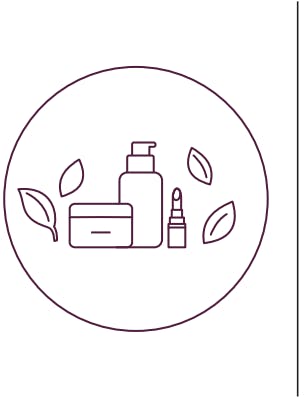4.3.1.3.1. Eco-designed products
A/ Reducing the environmental footprint of products

96% of products were eco-designed in 2021.

Most of the ingredients used in the formulas (over 90% by weight) have an end of life in domestic wastewater, and are treated by more or less advanced sanitation systems depending on the geographic area.
All formulas marketed by the Group pose no foreseeable risk to the environment. However, as some of the ingredients used in the formulas may have a more or less significant environmental impact, L’Oréal opened its first environmental research laboratory in 1995 to evaluate and reduce the environmental footprint of its formulas. Through this initiative, the Group has developed expertise with regard to the potential impacts of its cosmetic products on aquatic environments. Raw materials used in the formulation of products from the design stage are evaluated in such a way as to allow a strict selection of ingredients. L’Oréal has abstained from registering new raw materials with an adverse environmental profile since 2005.
Measuring the environmental impact of products
In 2013, an index was developed to quantify the environmental performance of a cosmetic formula in respect of the aquatic environment. To do this, a calculation method for the Water Footprint specific to cosmetic products was also applied to the entire portfolio of formulas (performance index for a formula based on the environmental profile of its ingredients in terms of biodegradability and aquatic eco-toxicity).
For several years, L’Oréal has carried out analyses of the life cycles of its products in order to identify, evaluate and improve their environmental impact.
Since 2017, the SPOT (Sustainable Product Optimisation Tool), based on a rigorous scientific methodology for assessing environmental impacts, has been rolled out to all Group brands (except recent acquisitions). This tool calculates the complete environmental and social footprint of a product in accordance with the European Commission recommendation (Product Environmental Footprint) on the use of common methods to measure and communicate the environmental performance of products and organisations. SPOT is an integral part of L’Oréal’s product launch processes, making it possible to incorporate sustainable innovation into the very heart of the product development.
The SPOT tool provides exhaustive measurements of all environmental factors by integrating 14 impact factors used by the European product environmental footprint framework. A standardised version of these different impacts is applied on the basis of the average impacts of a European consumer. Then, to obtain a single value for the product environmental footprint (formula and packaging), impacts are aggregated using a method based on the planetary boundaries developed by an international team led by Professor Johan Rockström of the Stockholm Resilience Centre. In a final stage, the footprint is compared to a benchmark in order to obtain a dimensionless score between 0 and 10 which allows the product design teams to measure their progress.
The SPOT tools also includes a methodology for measuring the social impact of products that was jointly developed with internal expertise (formula, packaging, factory, stakeholders) and nine international experts in social life cycle analyses (see paragraph “Using the Group’s purchasing power to serve social inclusion” in section 4.3.1.2.2.).
The SPOT tool has replaced the previously used environmental and social improvement assessment systems for formulas and packaging. SPOT takes account of more criteria and allows for a more complete and demanding analysis where the different impacts are weighted according to their contribution to the product’s overall impact. This tool has allowed assessment the environmental and social footprint of all products developed in 2021.
To classify the products according to the benefits offered to the consumer, all 19 product types manufactured by the Group (shampoos, hair care products, shower gels, skincare products, cleansers, hair colours, styling products, deodorants, sun care products, make-up, perfumes, etc.) were analysed. After defining around 150 product categories that bring consumer benefits and screening more than 40,000 formulas between 2014 and 2015, the performance of each consumer benefit category was established to allow eco-design of products using the SPOT tool to ensure that all new formulas are developed with the goal of an improved environmental profile with identical benefits for the consumer.

